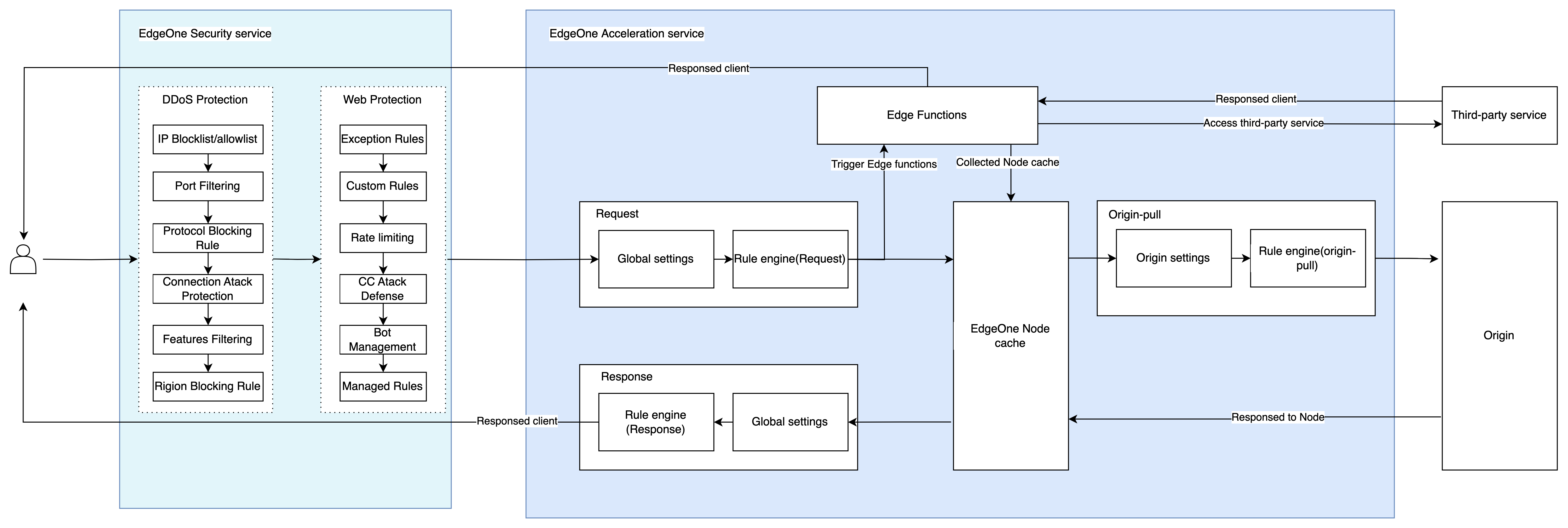请求处理顺序
最后更新时间:2024-05-28 14:03:42
本文介绍了客户端向 EdgeOne 发起请求后,平台内所配置的各模块规则对该请求的处理顺序,帮助用户了解规则的生效顺序及影响,以保障配置的规则能按照期望的效果来工作。
请求处理顺序

用户发起请求后,请求将按照如上顺序进行处理,例如:用户同时在规则引擎和边缘函数中配置了修改 HTTP 头部设置,因为边缘函数后处理,则最终依照边缘函数的处理结果生效。
1. 安全服务模块内请求可能触发多种规则处置,相关处置顺序说明如下:
DDoS 防护的请求处理顺序仅针对已购买四层代理的独立 DDoS 防护用户生效,详情请参见 DDoS 防护概述。
Web 防护内包含 Bot 管理模块,Web 防护模块内请求处理顺序,详情请参见 Web 防护请求处理顺序。Bot 管理模块内的规则生效顺序,详情请参见 Bot 管理概述。
如果请求触发 EdgeOne 安全防护模块内的安全策略,且该策略为拦截、丢弃并拉黑、封禁 IP 等处置方式,则该请求将被拒绝。
2. 规则引擎内规则生效优先级均高于全局站点设置规则,并且规则引擎内的规则生效顺序为下方规则优先级更高,详情请参见 规则引擎概述。
3. 当请求触发边缘函数规则时,请求将由边缘函数进行处理,边缘函数可通过子请求来访问第三方服务、EdgeOne 的缓存内容或者回客户源站,也可以直接响应客户端请求。
4. 在请求至 EdgeOne 节点缓存时,如果当前节点没有缓存,则会继续回源,如果节点命中缓存,则不会继续触发后续的回源规则,直接返回相应资源给用户。
文档反馈

